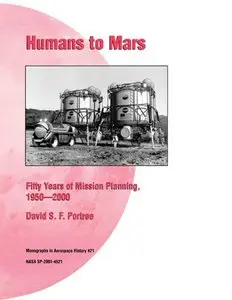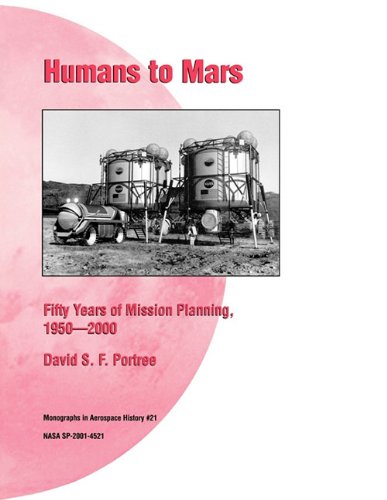Humans to Mars: Fifty Years of Mission Planning, 1950 - 2000 (Monographs in Aerospace History) by National Aeronautics and Space Administration
English | 2001 | ISBN: 1493656619,ISBN:1780393059 | 150 Pages | PDF | 2 MB
English | 2001 | ISBN: 1493656619,ISBN:1780393059 | 150 Pages | PDF | 2 MB
“The story of the dreams and the unbuilt spaceships for flights to Mars should be recorded so that in the future people can examine past ideas of space travel just as we can examine the unconsummated ideas of Leonardo da Vinci by reading his notebooks. Years from now people should be able to decide for themselves whether they want to go to Mars or if they prefer to stay earthbound. But let us not destroy the dream, simply because we do not wish to pursue it ourselves.” (Edward Ezell, 1979) In the past half century, visionary engineers have made increasingly realistic plans for launching astronauts to Mars to explore the planet. This monograph traces the evolution of these plans, taking into account such factors as on-going technological advancement and our improving knowledge of the red planet. More than 1,000 piloted Mars mission studies were conducted inside and outside NASA between about 1950 and 2000. Many were the product of NASA and industry study teams, while others were the work of committed individuals or private organizations. Due to space limitations, only 50 mission studies (one per year, or less than 5 percent of the total) are described in this monograph. The studies included are believed to be representative of most of the technologies and techniques associated with piloted Mars exploration. In addition to tracing the evolution of mission concepts, this monograph examines piloted Mars mission planning from a policy standpoint. Mars plans are affected by their societal context and by the policies that grow from that context. When the human species eventually decides to send a piloted mission to Mars, the political environment in which it develops will have at least as much impact on its shape as technology, human factors, and the Martian and interplanetary environments. Hence, it stands to benefit the space technologist to study the ways in which policy has shaped (and thwarted past Mars plans.



